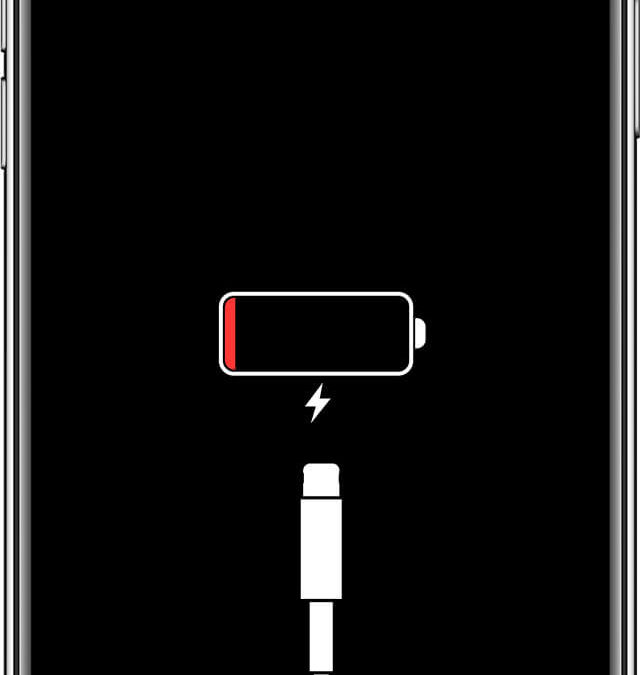Whether you have a wired or a wireless charger, we’ll teach you how to properly charge your iPhone and preserve its battery health in the long run.
Whether you have a wired or a wireless charger, we’ll teach you how to properly charge your iPhone and preserve its battery health in the long run.

Readers like you help support MUO. When you make a purchase using links on our site, we may earn an affiliate commission. Read More.
iPhones have excellent battery life right out of the box. However, the charm only lasts for a short time as the battery’s health depletes. Maintaining good battery health is more challenging than simply plugging in your charger.
It’s best to keep your iPhone’s battery healthy with proper charging methods; otherwise, you’ll end up with an iPhone that dies quickly. This guide will show you the best way to charge your iPhone correctly.
Choose the Right Charger for Your iPhone
Although it may not appear a big deal, chargers play an important role in maintaining good battery health. So, it is crucial to choose the correct charger for your iPhone. If you’re using a charging adapter that isn’t from Apple, look for the “Made for iPhone” logo.
If you see the logo on a charger, it means Apple has approved it for use with its products. If you connect an uncertified cable, a pop-up will show on the iPhone, mentioning that the accessory may not be supported. Uncertified chargers will overcharge your iPhone, whereas certified chargers will not.
In addition, certified chargers charge quickly but slow down when your iPhone hits the 80% level to preserve battery health. On the other hand, uncertified chargers will continue to charge your iPhone at high wattage, deteriorating battery health.
The same is valid for charging cables, MagSafe, or other wireless chargers. As a result, it’s always best to use Apple charging adapters and cables or those with the “Made for iPhone” logo.
How to Charge Your iPhone With a Wired Charger
After you’ve confirmed that you’re using the correct power adapter and cable for your iPhone, you can start charging it. However, you should remember a few things while charging your iPhone.
Your iPhone generates heat when you use a fast charger, such as the 20W adapter. We get that it’s the best way to charge your iPhone quickly, but it’s not perfect. So, if you’re using a charging case, remove it before charging, as it allows the heat to escape through the iPhone.
If you have the time and a low-wattage charging adapter, such as a 5W or 12W adapter, use it instead of a fast charger. It will produce less heat and will not degrade the battery’s health as quickly.
Even after removing the case, keep your iPhone on an elevated surface to ensure it dissipates heat more effectively while charging. As a tip, place the case diagonally beneath your iPhone to raise it slightly higher from the surface.
How to Charge Your iPhone With a Wireless Charger

Apple added Qi wireless charging support to iPhones starting with the iPhone 8. Eventually, Apple debuted MagSafe charging with the iPhone 12 series, which expanded the capabilities of standard wireless charging to make it the best way to charge the iPhone wirelessly.
Whatever wireless charging technology you use, it will be doing the same thing at its core, albeit at varying speeds. Furthermore, wireless chargers make charging your iPhone much more convenient.
As appealing as it sounds, wireless charging is slow and generates a lot of heat, which isn’t ideal for your iPhone. However, it’s OK to charge wirelessly sometimes, but only sometimes. Even if you use wireless charging daily, there are a few things to remember.
Before charging your iPhone wirelessly, make sure to remove the case because it will ensure that your iPhone remains attached to the wireless charging coil and charges efficiently. Place the iPhone in the center of the wireless charger, so it can fully utilize the wireless charging.
If your iPhone is compatible with MagSafe, use Apple’s MagSafe chargers rather than Qi-enabled wireless chargers. Furthermore, if your iPhone does not support MagSafe, you should avoid using MagSafe chargers with your iPhone.
Tips to Avoid Damaging Your iPhone’s Battery
While charging your iPhone matters, it’s also essential to ensure that you’re not damaging your iPhone’s battery in other ways. So, here are a few tips to avoid damaging the battery health of your iPhone:
Don’t Charge Your iPhone Overnight
You might prefer to wake up with a full battery in the morning so that you don’t have to worry about charging your battery. As a result, you keep your iPhone on charge overnight. However, it’s not good even if you’ve turned on Optimized Battery Charging on your iPhone.
Stop Charging to 100 Percent Every Time
As a good practice, you should avoid charging your iPhone to 100% all the time and not let it go below 25%. Ideally, keep the battery percent somewhere between 30% and 80% to maintain your iPhone’s battery health.
Avoid Extreme Temperatures
High temperatures can affect your iPhone’s battery health. If you’re in an area with high temperatures, it’s best not to do heavy tasks on the iPhones, such as playing games or using the camera for a long time, especially while charging.
If not, the temperature of your iPhone will rise to extreme levels, making the iPhone dim the screen and limit background tasks. Apple recommends keeping the iPhone between 32°F and 95°F (0°C to 35°C).
Learn How to Charge Your iPhone Correctly
In the end, you can’t stop your iPhone’s battery from degrading, but you can at least slow the process with the tips mentioned above. However, we recommend turning on your iPhone’s optimized battery charging option immediately.
As a result, you won’t need to replace your battery for a long time, and you’ll have one less reason not to upgrade your iPhone every year.
Source : makeuseof.com

